Introducing the Rosy-faced Lovebird:
The Most Friend-Shaped of Birds!
I took over the care of Oscar Boy, the Peach-faced Lovebird, in 2015 (before that, he lived with my mother). He passed away very suddenly around the age of 10 to 12 years old. He was an exceedingly friendly, loyal and outgoing little bird and an extraordinary ambassador of lovebird kind. Whenever I see images of other Peach-faced lovebirds, whether wild, feral, or other pets, I cannot help but think that all of Oscar's extended kin look like small friends.
Oscar Boy
Oscar put all of his stats into Charisma. He was the sort of extrovert who was determined to be friends with anyone, whether human, avian, or otherwise. He helped other birds come out of their shell, and he charmed humans who previously claimed to not like birds. He had a specific whistle that served as both greeting and contact call for his favorite humans. He was very protective of his mate, Moonie Bird, a Black-masked Lovebird who also passed about a year before Oscar.
He became well-known among my friends and colleagues during COVID lockdown as a permanent fixture on my shoulder during Zoom meetings.
Two of Oscar's greatest goals in life were cuddles and people food.
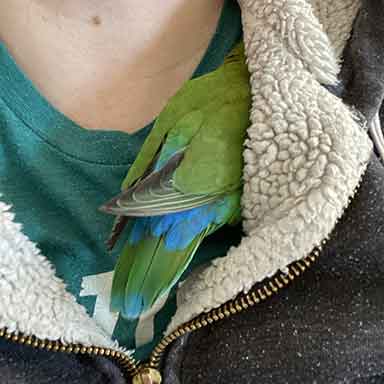 |
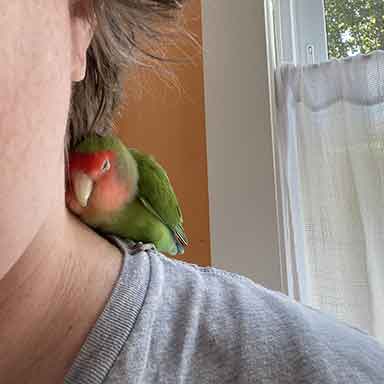 |
 |
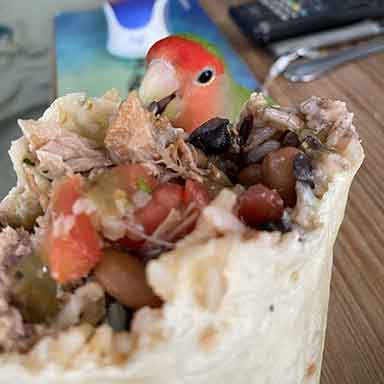 |
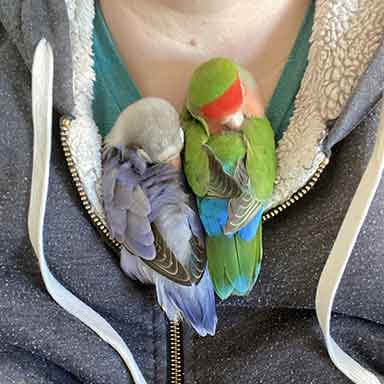 |
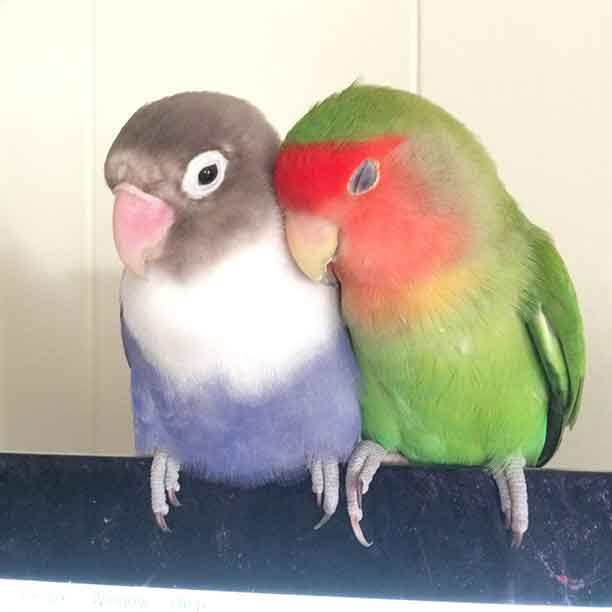 |
Wild Lovebirds
Peace-faced Lovebirds are native to open, arid savanna and shrubland and desert regions of southwestern Africa, including the Namibian Desert. There are two recognized subspecies: Agapornis roseicollis catumbella in Angola and Agapornis roseicollis roseicollis in Namibia, Botswana, and South Africa. They typically flock in groups of five to 20, but groups can reach into the hundreds when food is plentiful.
I would love to find the local terms for the birds in Indigenous languages, but I haven't had any luck so far.
_flock.jpg)
Photo: Flock in Nambia, Charles J. Sharp via Wikimedia Commons.
Feral Populations
Released and escaped pets have established feral populations in the U.S. state of Arizona and in Hawaii, as well as other regions. In Arizona, the birds are seen visiting bird feeders and have developed a habit of nesting in hollows of cactus. They have also been observed in recent years using home air conditioning units to cool off on excessively hot days. Research by the Arizona Field Ornithologists concluded that the feral population is self-sustaining and has shown little to no negative impact on native bird populations or habitats.
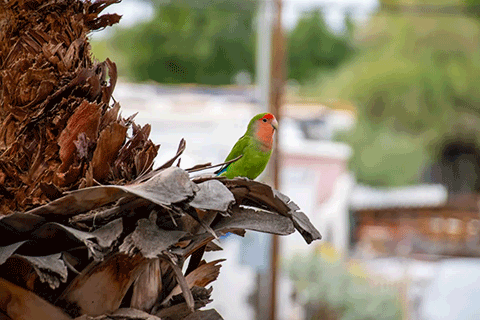
Photo: Lovebird in an Arizona front yard, u/srhkaty via r/Lovebirds.
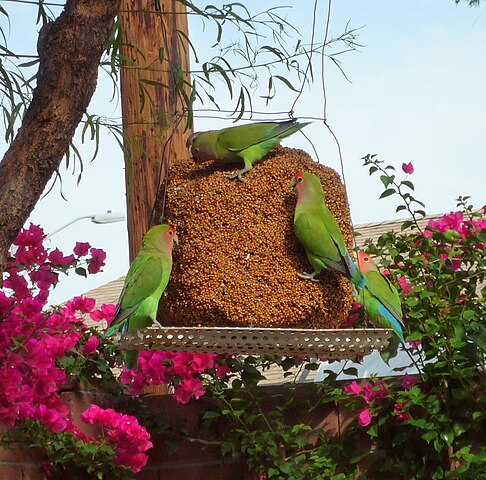
Photo: Lovebirds at a bird feeder in Scottsdale, Arizona, D. Patrick Lewis via Wikimedia Commons.
Caring for Pet Lovebirds
Below are a handful of forums and resources with information for caring for pet lovebirds. Please note that information provided by pet stores can often be misleading or inaccurate.
